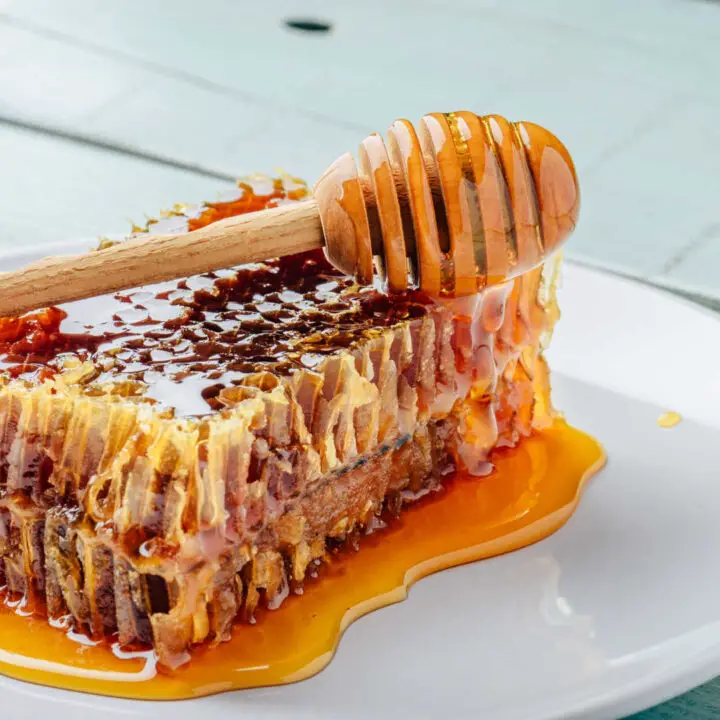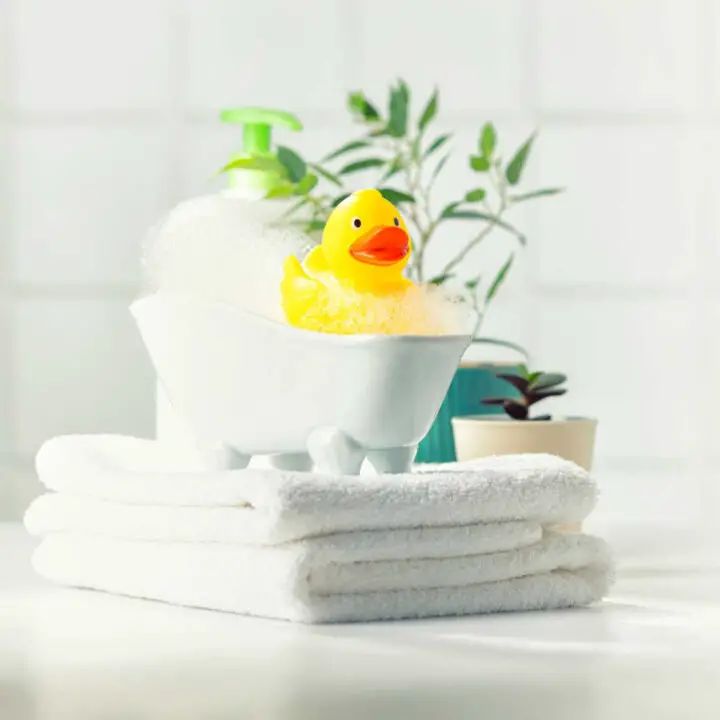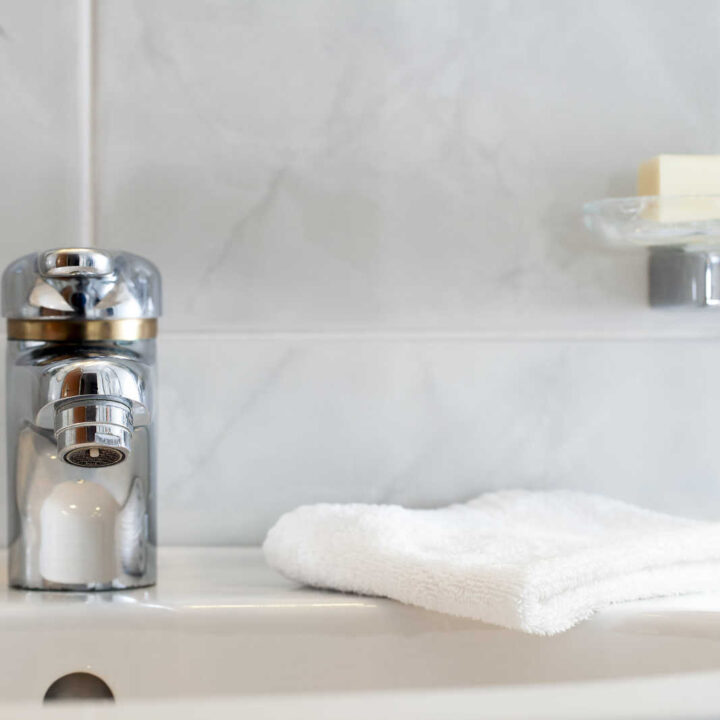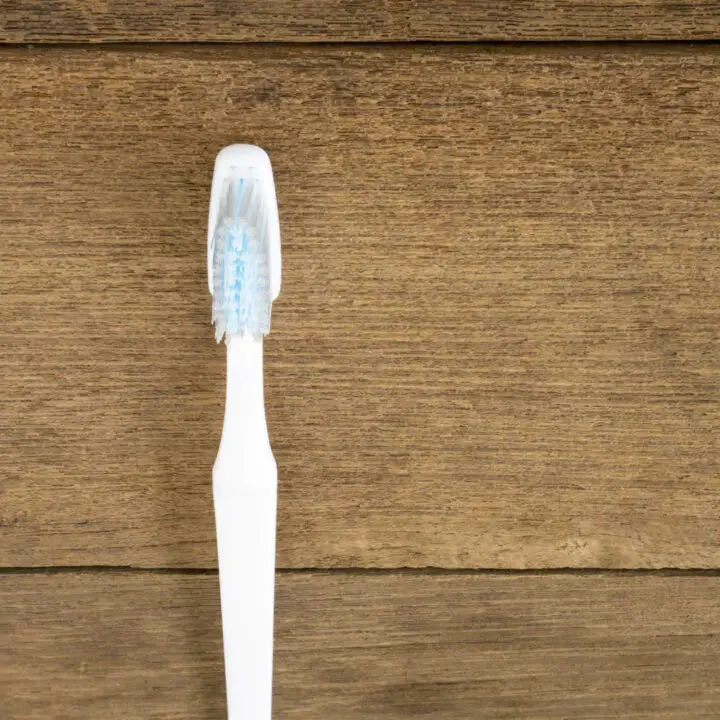
There are many commercial products that can be used to treat razor bumps, but there might be something already in your kitchen or bathroom that can get the job done. There are a number of home remedies that you can try–I’ll show you a few of the most popular ones.
But First – What are Razor Bumps?
Razor bumps are small bumps that form on the surface of the skin after shaving. They can develop to hyperpigmentation or permanent scar tissue.
There are two types of razor bumps: extrafollicular and transfollicular. In an extrafollicular case, hair follicles grow inward and stay trapped inside the skin. In a transfollicular case, hair exits the skin’s bottom later but stays trapped on top near the surface, leaving a small amount of hair exposed.
Plucking out remaining hair with tweezers can lead to further irritation and may turn a hair follicle into an ingrown hair.
Causes Of Razor Bumps
Razor bumps, also known as ingrown hairs, are common skin irritation and inflammation. They occur when hair grows back into the skin in an abnormal way. There are many causes of razor bumps, but the most common ones are shaving against the grain, using a dull or dirty razor, not using a sharp enough blade, overuse of shaving cream or soap, incorrect application of after-shave lotion, and inadequate sleep or hydration levels.
How To Prevent Razor Bumps
The best way to deal with razor bumps is to not get them in the first place:
- Prepare the area by gently cleaning it with a soap that’s meant specifically for the face.
- Use as few blades as necessary (like just one!) to get the job done and don’t over-use a blade or cartridge.
- Use good shave technique by shaving with the grain of the stubble first, then relathering and shaving across the grain. Do not shave against the grain.
- Use a good aftershave product to protect and moisturize the skin.
For a lot more about preventing razor bumps click/tap here to read 5 Ways To Prevent Razor Bumps
When To See A Doctor For Razor Bumps
If you develop deep grooves and raised scars on your face from razor bumps, it’s time to see a dermatologist. A dermatologist will be able to diagnose the cause of the bump and provide the best treatment plan for you.
Home Remedies For Razor Bumps
There are many commercial products that can be used to treat razor bumps, but some people prefer to use home remedies. Look for ingredients that have anti-inflammatory and antiseptic properties: they may not have the concentration of these properties as products specifically for razor bumps, but that doesn’t mean they can’t be useful. There are many different home remedies that can be used, but here are the most popular ones.
From The Kitchen

The kitchen is a great place to find remedies for razor bumps. Some products have properties that are useful for treating razor bumps.
Apple Cider Vinegar
Apple cider vinegar is claimed to comprise anti-inflammatory and antiseptic properties that work to soothe itchy, irritated skin.
Mix equal parts apple cider vinegar and water, and dab a cotton ball in the solution. Apply the vinegar to the affected area up to three times per day, and let it dry naturally.
Wash the product off immediately if you experience any burning or stinging. Those with sensitive skin should avoid this method altogether.
Coconut Oil
Coconut oil is used in cooking, but it’s also great for your skin. Coconut oil is a medium-chain fatty acid, which is a type of fat that is metabolized differently than other types of fat. This makes coconut oil good for your skin because it doesn’t clog your pores or lead to acne. In addition to its moisturizing and softening effects, coconut oil has anti-inflammatory and antiseptic properties so it can also help reduce inflammation and irritation.
To use coconut oil as a razor bump remedy, pour a few drops onto a cotton ball and apply it to the bumps. Leave it on for 10 minutes for the skin to absorb the oil then wipe with a clean and soft tissue paper. Repeat the procedure 2-3 times daily until the bumps are gone.
Honey

Honey is known for its antibacterial and anti-inflammatory properties. Honey can be used in many different ways, including as a topical treatment for razor bumps.
If you’re experiencing razor bumps, honey is a great home remedy to try. You can apply honey twice a day for best results.
Combining Coconut Oil, Honey, And Sugar Into A Scrub
Looking for an effective way to prevent razor bumps? Sugar can help! Sugar can be rubbed into the skin to help free trapped hair.
You will need: 1 tablespoon sugar, 1 tablespoon coconut oil, and a clean and soft tissue. Heat the coconut oil a little and mix in sugar; then rub it on the area for two minutes. Wipe off with a clean and soft tissue.
Sugar can be used daily two hours after shaving and before going to bed. Some scrubs may be too irritating for sensitive skin, so avoid them if this is the case.
Baking Soda Paste
If you’re experiencing a lot of itchiness and inflammation from razor bumps, baking soda may be your best friend. Baking soda has a cooling effect on the skin which is thought to draw out heat and pain. This makes it a great option for reducing the severity of razor bumps. You can use baking soda and water to make a paste that can then be applied to the skin and left to dry. Baking soda can be used 2-3 times per day depending on severity of razor bumps.
Lemon Juice

Lemon can be an effective home remedy to heal razor bumps. It has great astringent quality and acidic properties which helps in killing the bacteria and makes the bumps go dry. Dip a cotton ball or pad into the diluted lemon juice with water and apply it over the razor bumps. Do it twice a day until it heals. Wash off with lukewarm water once dried.
Aloe Vera
Aloe vera is a succulent plant that grows in warm climates all over the world and a lot of people have a plant in their kitchen. Aloe vera has been used for centuries to treat a variety of skin conditions, such as razor burn. Aloe vera can help reduce the swelling and redness and soothe the damaged skin from razor bumps. In addition, aloe vera also has antibacterial properties, which may help prevent ingrown hairs from getting infected and turning into more severe razor bumps.
Simply apply aloe vera gel to the affected area and allow it to work its magic.
Cucumber And Milk
Cucumbers have antibacterial properties and can be used to soothe razor bumps. Fresh cucumber slices should be kept refrigerated for an hour, and then rubbed on the bumps three or four times a day.
Cucumber can also be peeled and pureed with half an avocado to apply directly to the bump.
A tablespoon of pureed cucumber and 2 tablespoons of milk mixed together before being refrigerated for 15 minutes, and then applied to the bump once it’s cold. Washing off with cold water should be followed by moisturizing the area with cream or lotion. Repeating this process twice or thrice daily will heal the bump.
Remedies From The Bathroom

While there are many commercial products available to treat razor bumps, there are also some other remedies that are readily available in the bathroom.
Tea Tree Oil
Tea tree oil is a natural remedy for calming inflammation. Tea tree oil contains antiseptic, anti-inflammatory, and antibacterial properties. These properties can reduce the amount of inflammatory white blood cell s in your skin. Tea tree oil also has antibacterial and antiviral benefits to get rid of any harmful microbes that could cause infection and further irritation.
Caution should be used when using tea tree oil because it may cause an allergic reaction or further skin irritation in some people.
You can use tea tree oil to treat razor bumps. Dilute tea tree oil with a carrier oil, such as olive oil or coconut oil. Mix a tablespoon of olive oil with five drops of tea tree oil .apply the solution to the affected area. Let everything sit for 15 minutes, then rinse the oil off with warm water.
Hot Or Cold Compress With Washcloth

To soothe razor bumps and reduce inflammation, you will want to soak a washcloth in cold water and press it gently into the area of skin with razor bumps. You should repeat this about five times.
If you suffer from razor bumps, a cold or warm compress can help. Apply a cold compress twice daily to the shaved area and then follow it up with a warm compress to soothe the skin. Additionally, a cold compress may help reduce swelling and relieve irritated skin.
Rubbing Alcohol
To get rid of razor bumps, you can try applying rubbing alcohol on them. Apply it using a cotton ball, and let it air dry. Apply this twice a day, until you notice relief from the bumps.
Aspirin Paste
Crush aspirin tablets and mix with water (or Witch Hazel) to form a paste.
Apply this on the affected area and let it dry for 10-12 minutes.
Rinse with lukewarm water.
Repeat this once or twice a day.
Castor Oil
Castor oil has antibacterial properties and is rich in antioxidants that help in healing the bumps quickly. Apply castor oil twice a day, and do not wipe or wash away the oil.
Hydrocortisone Cream
Hydrocortisone cream is available without a prescription and can be applied on the affected area with the help of a clean cotton swab. Hydrocortisone cream should be left on for 20 minutes and then washed off with cold water. Apply it once or twice every day, depending on the intensity of the swelling.
Toothbrush

Rub a clean, dry, hard-bristle toothbrush on the area for 30 seconds twice a day (around Noon and just before bedtime works well for many).
Acne Treatments With Benzoyl Peroxide
Benzoyl peroxide is an effective acne treatment that can remove bacteria and dead skin cells. Benzoyl peroxide can dry up affected areas of the skin and reduce discoloration. Benzoyl peroxide can be found as an OTC cream, gel, or cleanser.
Summing Up
In conclusion, there are a number of home remedies that can help reduce or prevent razor bumps. Additionally, using a quality razor and shaving with the direction of hair growth in mind can also help reduce the chances of developing razor bumps.
About The Author: Otto Wright is a budding author and traditional wet shaver.

Tried many home remedies. Lots of them made my ingrowns less inflamed but jojobaoil actually solved the problem.
After shaving i massaged a drop over the ingrowns and then applied my usual after shave. In 10 days or so no more ingrowns.
I had develeoped what i think was som kind of very thin and superficial but hard scar tissue over and around the ingrowns. The jojoba oil softened this tissue so the hairs would get trough.
It didnt fully solve the problem untill i put some effort into massaging the oil and really work it into the skin. This massage initially made the inflamation worse but thats a small price to pay if you get rid of the ingrowns.
After a few days i massaged in a drop before going to bed as well wich seemed to accelerate the process.
Gret article, Mark!
Comments are closed.